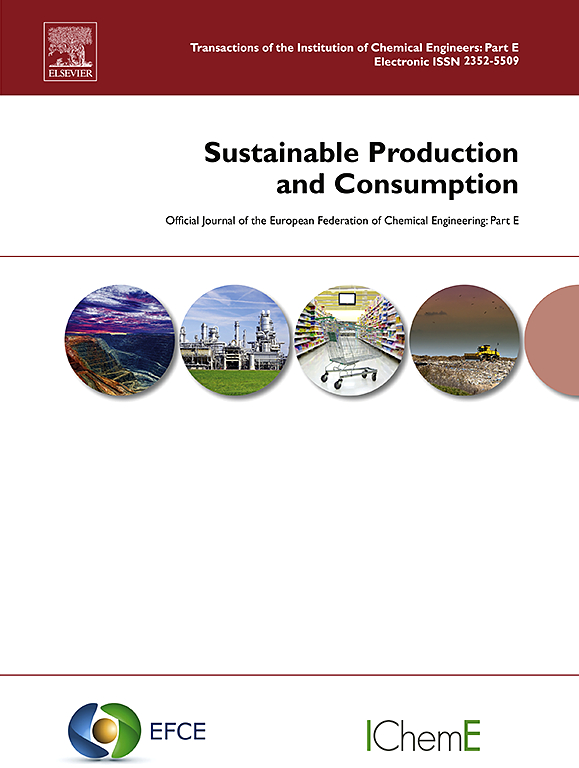透明是一个好的商业策略吗?消费者的偏好和意愿为重复使用和回收服装的化学成分信息付费
IF 10.9
1区 环境科学与生态学
Q1 ENVIRONMENTAL STUDIES
引用次数: 0
摘要
再循环可以发挥重要作用,尽量减少纺织工业对环境的影响。然而,资源再循环与无毒害环境的监管战略之间存在冲突。从再循环中去除受限制物质的一个途径是通过标签策略,告知消费者产品的化学成分。迄今为止,关于化学成分信息对消费者购买零售商品(特别是服装)的支付意愿的影响的研究相当有限。我们在丹麦、瑞典和英国进行了离散选择实验,样本为1528名成年人,我们调查了获取有关服装化学成分的信息是否会影响消费者购买新、回收和再利用服装的意愿。尽管在欧盟的法规中,获取受限制化学品的信息是一项知情权,但该研究强调,人们对这一权利的认识很低:所有国家中有23%的受访者要求获得此类信息。调查结果显示,人们强烈倾向于通过二维码即时获取化学信息,或者直接获取直接印在产品标签上的信息。有趣的是,QR码比印刷的产品标签更受欢迎。同时,在标准的45天等待期内提供的信息并不比完全没有信息更可取。有意义的是,在所有情况下,消费者都愿意为快速获取新的和回收的选项信息而支付额外费用,但对于使用过的选项存在不确定性。我们的调查结果还显示,高达9%的受访者根据“按方面淘汰”策略进行选择,这意味着他们将避免购买没有化学成分信息的衣服。研究结果强调了提高纺织品价值链透明度和更好的信息交流的必要性,但也强调了循环经济企业面临的高度不确定性。本文章由计算机程序翻译,如有差异,请以英文原文为准。
Is transparency a good business strategy? Consumer preferences and willingness to pay for information about the chemical content of reused and recycled clothing
Recirculation can play an important role minimizing the environmental impact of the textile industry. However, there exist conflicts between recirculation of resources and regulatory strategies for a non-toxic environment. One pathway to remove restricted substances from recirculation is through labelling strategies that inform consumers about the chemical content of products. To date, research on the influence of information about chemical content on consumers' willingness to pay for retail purchases, particular in the clothing sector, is rather limited. Using discrete choice experiments conducted in Denmark, Sweden and the United Kingdom with a sample of 1528 adults, we investigated whether access to information about the chemical content of garments influences consumer willingness to pay across new, recycled and reused clothing. Although access to information about restricted chemicals is enshrined as a right-to-know in the European Union's regulations, the study highlights low awareness of this right: <23 % of respondents in all countries have requested such information. Findings show a strong preference for either instant access to chemical information through a QR code or direct access to information printed directly on a product label. Interestingly, the choice of QR code is preferred over printed product labels. At the same time, information provided in the standard 45-day waiting period is no more preferred than no information at all. Meaningfully, consumers in all contexts are willing to pay a premium for rapid access to information for new and recycled options, but there is uncertainty regarding used options. Our results also show that up to 9 % of the respondents choose according to an elimination-by-aspects strategy, meaning they will avoid purchasing clothes without access to information about chemical content. The results strengthen the need for higher transparency and better exchange of information along textile value chains, however they also emphasize the already high uncertainty faced by circular economy enterprises.
求助全文
通过发布文献求助,成功后即可免费获取论文全文。
去求助
来源期刊

Sustainable Production and Consumption
Environmental Science-Environmental Engineering
CiteScore
17.40
自引率
7.40%
发文量
389
审稿时长
13 days
期刊介绍:
Sustainable production and consumption refers to the production and utilization of goods and services in a way that benefits society, is economically viable, and has minimal environmental impact throughout its entire lifespan. Our journal is dedicated to publishing top-notch interdisciplinary research and practical studies in this emerging field. We take a distinctive approach by examining the interplay between technology, consumption patterns, and policy to identify sustainable solutions for both production and consumption systems.
 求助内容:
求助内容: 应助结果提醒方式:
应助结果提醒方式:


